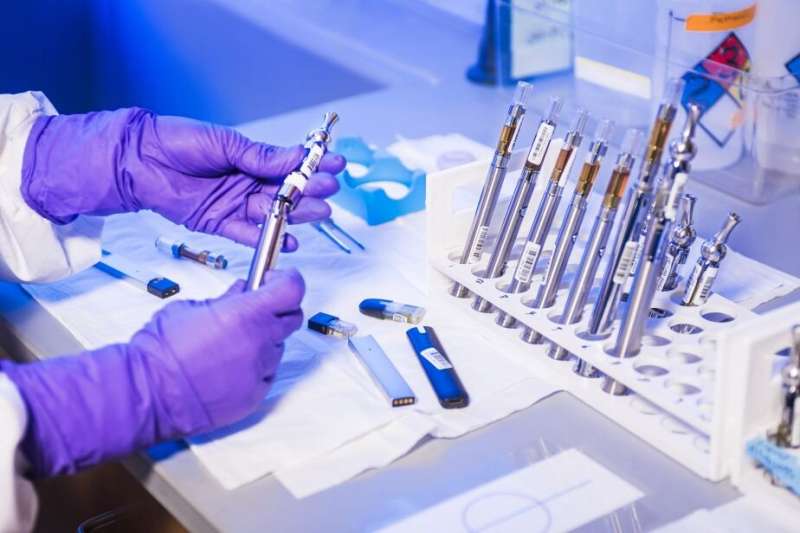Credit: James Cook University
Scientists from James Cook University's Australian Institute of Tropical Health and medicine (AITHM) have developed a system to improve the development of tuberculosis (TB) vaccines.
Senior research fellow and microbiologist at AITHM, Dr. Andreas Kupz, said TB claimed 1.6 million lives globally in 2018.
"There are 10 million active cases of TB per year and drug-resistant strains are multiplying. There is a vital need to develop a new vaccine that provides greater immunity," he said.
Dr. Kupz said developing vaccines is immensely expensive—with every Phase 3 clinical trial costing at least $500 million.
"So it's really important to make rational decisions; which vaccine should move from one stage to the next. It's essential to rank them," he said.
Dr. Kupz said the AITHM TB Immunology group, in collaboration with AITHM bioinformatician, Dr. Ashley Waardenberg, has developed a mathematical model to help prioritize new TB vaccine strategies that merit further investigation.
"It's a tool which could guide the crucial allocation of limited global resources to find a more effective alternative to the current vaccine, BCG, which has been in use for almost 100 years," he said.
The development and trial of the Vaccine Empirical Integrated Model (VEIM) featured this week in the latest edition of the prestigious international journal, Science Advances.
VEIM was created in parallel with the team's own recent development and assessment of a promising new strain of the existing TB vaccine.
The team believe that safety is currently the lowest priority in traditional preclinical evaluation of new TB vaccines, which is heavily skewed towards assessing immunogenicity (ability to stimulate a protective immune response) and/or efficacy, in terms of eliminating the bacteria which causes TB.
"However, safety and efficacy are the dominant considerations in human use," said Visai Muruganandah, the first author of the study.
"Despite this, there remains no gold standard approach to integrating data that covers all three—safety, immunogenicity and efficacy—to rank vaccines based on overall performance and simultaneous comparison in all three categories," he said.
The VEIM trial assessed 24 vaccine regimens in an animal model of TB, composed of three BCG strains and eight combinations of vaccine delivery, including booster vaccination. An additional control group was also evaluated. (The AITHM vaccine candidate was not included in the trial.)
The team developed a simple empirical model to systematically rank vaccination strategies by integrating multiple measurements of safety, immunogenicity, and efficacy.
"Developing simple models that are readily interpretable is important for understanding what makes an effective vaccination strategy and where we need to focus our efforts," said Dr. Waardenberg.
More information: Visai Muruganandah et al. A systematic approach to simultaneously evaluate safety, immunogenicity, and efficacy of novel tuberculosis vaccination strategies, Science Advances (2020). DOI: 10.1126/sciadv.aaz1767
Journal information: Science Advances
Provided by James Cook University
























